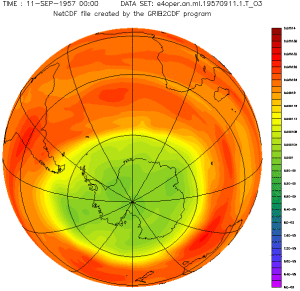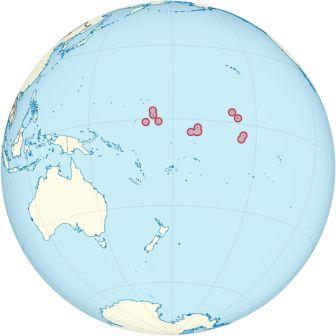International day for the Preservation of the ozone layer – 16th September, 2013

The 19th International day for the Preservation of the Ozone Layer is on 16th September, 2013. The theme of this year is “A healthy atmosphere, the Future We Want”.
Background- In 1995, the UN General Assembly adopted a resolution 49/114 which proclaims 16th September as the International Day for the Preservation of the Ozone Layer, to commemorate the signing of the Montreal Protocol on the Substances that Deplete the Ozone Layer which was signed on 16th September, 1987. Since 1995, this day is celebrated every year as the International Day for the Preservation of the Ozone Layer and commemorates the date of signing of the Montreal Protocol.. This International Day offers an opportunity to focus global attention and action on this vital environmental issue.
Smt. Jayanthi Natarajan, Minister of State for Environment & Forests (Independent Charge) will preside over the function at Chennai. To create greater awareness among the students to protect the Ozone Layer, different competitions for the school students are arranged each year with active participation of the schools. The Minister will distribute awards to the winners of such competitions at above function.
The Vienna Convention for the Protection of the Ozone Layer was signed on 22nd March, 1985 and the Montreal Protocol on Substances that Deplete the Ozone Layer was signed on 16th September, 1987 to protect the ozone layer. India became party to the Vienna Convention for the Protection of the Ozone Layer on 18th March, 1991 and the Montreal Protocol on Substances that Deplete the Ozone Layer on 19th June, 1992.
The Montreal Protocol on Substances that Deplete the Ozone Layer has been recognized as the most successful international environment treaty in history. Another testimony to its remarkable accomplishments, the Montreal Protocol has received universal ratification; all countries in the world have now ratified this landmark agreement. This brings together the whole international community to protect the ozone layer.
The Protocol was the culmination of decades of research, which established that chemicals containing chlorine and bromine released in the atmosphere could damage the ozone layer. A depleted ozone layer in the stratosphere allows the Ultraviolet-B (UV-B) rays of the Sun to reach the Earth exposing mankind, flora and fauna to its harmful effects. According to the World Health Organization, each year between 12 and 15 million people become blind from cataracts worldwide, of which up to 20% may be caused or enhanced by sun exposure.
Initially, on the basis of very definite empirical findings, the Protocol enjoined upon all the signatory nations to completely phased out the major Ozone Depleting Substances (ODSs) such as Chlorofluorocarbons (CFCs), Halons and Carbon tetrachloride (CTC) in a given time schedule. Later, other studies have brought more ODSs such as Hydrochlorofluorocarbons (HCFCs) and Methyl-Bromide under the ambit of the Protocol for phasing out within the given deadlines.
The Montreal Protocol which is in operation for more than twenty five years had an extraordinary international cooperation and has led to complete phase-out of production and consumption of several ODSs. As of 1st January, 2010, the production and consumption of key ODSs like CFCs, CTC and halons have already been phased out globally. This has not only protected the stratospheric ozone layer but it has also immensely benefitted the climate system. The ODSs are potent Green House Gases (GHGs) and these gases were not included in Kyoto basket of gases for emission controls. As per expert estimates, from 1st January, 2010 GHG emissions have been reduced by about 11 Giga tonnes CO2 equivalent per year through the ODS phase-out activities which amounts to 5-6 times reduction targets by the Kyoto Protocol during first commitment period of 2008-2012.
India, being a Party to the Vienna Convention for the Protection of the Ozone Layer and the Montreal Protocol on Substances that Deplete the Ozone Layer, have been sharing the global concern for protecting the ozone layer and phasing out of the ODSs. These substances are used in industrial and pharmaceutical aerosols, refrigeration and air-conditioning equipments, foam manufacturing, fire extinguishing equipment, metal-cleaning, garment cleaning, soil fumigation and quarantine and pre-shipment applications etc.
Since 1993, with the continued efforts made by stakeholders, especially the industry and others, responsible for implementation of the Montreal Protocol activities, India has successfully phased-out the production and consumption of CFCs, CTC and halons as of 1st January, 2010 except the use of pharmaceutical grade CFCs in manufacturing of Metered Dose Inhalers (MDIs) for treatment of Asthma, Chronic Obstructive Pulmonary Disease (COPD) and other respiratory ailments under the Essential Use Nomination (EUN) provisions of the Montreal Protocol.
India proactively ceased the production and consumption of CFCs from 1st August, 2008, 17 months ahead of schedule of the Montreal Protocol. However, adequate steps were taken to ensure the supply of pharmaceutical grade CFCs for the critical sector especially for manufacturing of MDIs for Asthma and COPD patients in our country through EUN provisions of the Protocol especially during the transition period. India got it approved of 343.6 MT of pharmaceutical grade CFCs for 2010 for manufacturing of MDIs in the country. The Indian MDI manufacturers have made an excellent progress in developing CFC-free formulations for most of the MDIs and now only CFC-free MDIs are supplied in the domestic market. As a result, India in consultation with MDI manufacturers decided not to seek EUN of pharmaceutical grade CFCs for 2011 and beyond.
Recognizing the success of the Montreal Protocol in phasing out the ODSs like CFC, CTC and halons, the 19th Meeting of the Parties (MOP) held in September, 2007 had taken a decision to advance the phase-out of HCFCs by 10 years. The baseline for production and consumption of HCFCs, for developing countries, has been established based on the average of production and consumption for the years 2009 and 2010 respectively. The production and consumption of HCFCs in the country has already been frozen on the baseline level as on 1st January, 2013 as a first control target. The HCFC phase-out activities are in progress to reduce the production and consumption of HCFCs by 10% in 2015.
Source- PIB



